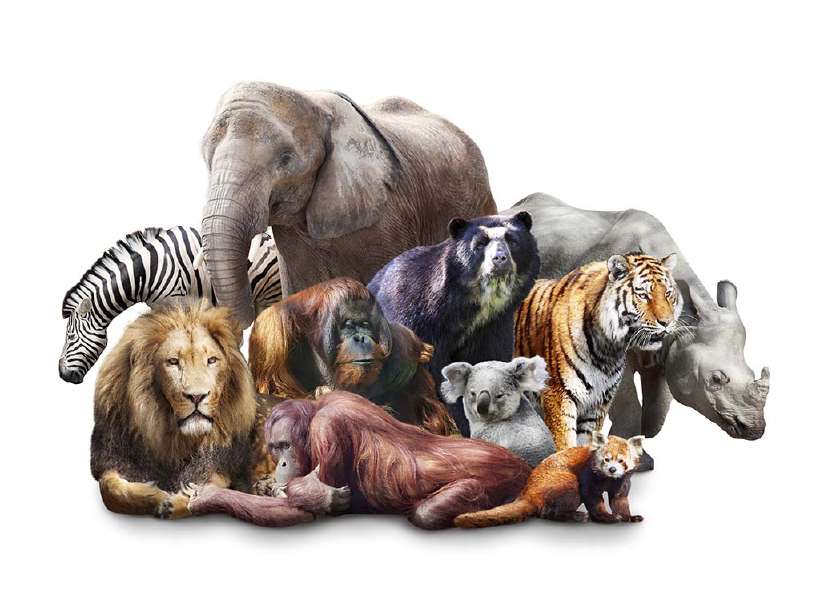The Truth about Zoos
Home / Science for Kids / Planet Earth for Kids / The Truth about Zoos
Last week we carried a piece about the relevance of zoos as the last refuge of endangered species. But in India it appears that zoos should be the last place for animals of any sort, let alone the endangered variety.
It is no secret that most Indian zoos are in a bad state. Although zoos claim to educate people and preserve species, Indian zoos do neither. Most zoo enclosures are quite small, and labels provide little information. Visitors are more interested in entertainment, often at the expense of the animals, than in educating themselves.
The purpose of most zoos’ research is to find ways to breed and maintain more animals and to increase their numbers. Most of the animals housed in zoos are not endangered at all, nor are they being prepared for release into natural habitats!! The zoos are full of animals that are commonly seen – such as mongooses, peacocks, wolves and ducks.

Maybe these animals should be released in the wild. There will be more space in the zoos for endangered animals then.
So what purpose are the zoos serving? The entry for most zoos (including Mumbai’s Jijamata Udyan) is around Rs. 10/-, a mere pittance that is just not sufficient to maintain the area. Why can’t they charge more for a ticket?
Research carried out by scientists show that animals are psychologically affected by the lack of space and the constant intrusion of people. The miserable living conditions in zoos and the lack of privacy often lead to animals indulging in abnormal behaviour known as ‘zoochosis’. They bang their heads against the wall, bite cage bars and even bite their own limbs!
More than 60% of the animals in zoos have marks on their heads because of continuously banging their heads against the bar, says animal rights activist, Maneka Gandhi. An activist is a person who believes in direct action like mass demonstration, in support of a cause.
India has 64 fairly large zoos and another 194 are medium sized zoos- and statistics show that in all these zoos some 10-15 percent animals die every year! Of course the deaths of endangered species gets mentioned in the newspapers, but deaths of monkeys, deer and other less prized animals often goes unnoticed.
The other day, for instance, a visit to the Mumbai zoo (Jijamata Udyan in Byculla) came as a rude shock. Most of the animal cages are dismally small; the lioness can cover the length of her cage in three paces. Elephants are cruelly chained close to the main entrance; the hyena had a raw untreated gash on its leg, while the ducks were flapping helplessly in the dry pond. There was not a drop of water to be seen except for some stagnant water in the hippo trough.
On top of all this hecklers abound, driving the animals to frenzy with their hoots and jeers. And the worst part is no one seems to care.
The Supreme Court has finally woken up to the plight of caged animals and has ordered that no new zoos be built without the Court’s prior approval and anyone who fails to follow the order be severely punished. The Court was forced to intervene after the Central Zoo Authority, (authority set up by the government in 1992, under the Wildlife Protection Act), failed to improve the conditions of zoos.
In order to raise much-needed funds and improve zoo conditions, three Andhra Pradesh zoos (The Nehru Zoological Park in Hyderabad and two other zoos at Vizag and Tirupati) have hit upon a unique adoption scheme. A big cat can be adopted for Rs 1 lakh while a whole lion safari could cost as much as Rs 20 lakhs.
And for those of you who cannot afford the total amount, don’t lose heart. There is a scheme by which people can pay a small share of the total cost. The only catch is, you cannot take your pet home. Now if only the other zoos did something similar, at least then the existing caged animals will have a fighting chance.
683 words |
6 minutes
Readability:
Grade 9 (14-15 year old children)
Based on Flesch–Kincaid readability scores
Filed under: planet earth
Tags: #mumbai, #space
You may also be interested in these:
Know-it-alls and Find-it-outs
Asia's First Floating Museum
Rat Menace
Who Invented the Frisbee?
The Cool and Cunning Lark